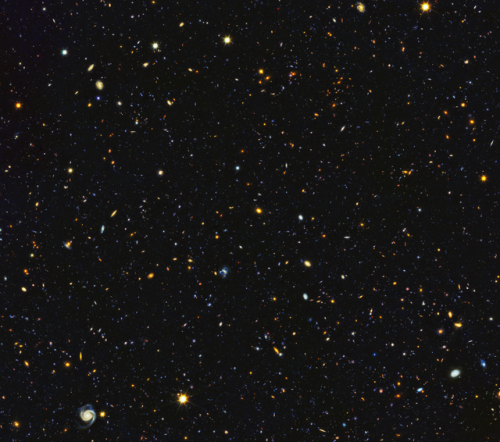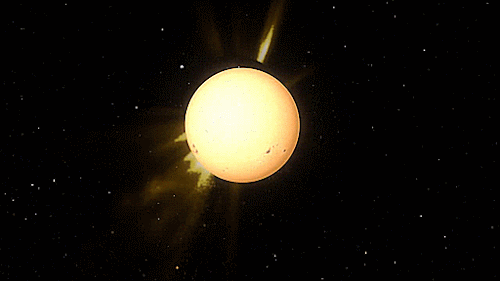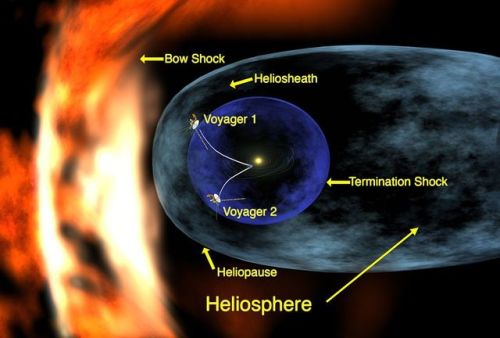Not Only Didn’t We Find Water On An Earth-Like Exoplanet, But We Can’t With Current Technology










Not Only Didn’t We Find Water On An Earth-Like Exoplanet, But We Can’t With Current Technology
“Over the past few decades, astronomers have uncovered thousands of new exoplanets. Some of them are rocky; some are temperate; some have water. However, the idea that exoplanet K2-18b is rocky, Earth-like, and has liquid water is absurd, despite recent headlines. Light filters through K2-18b’s atmosphere when it passes in front of its star, enabling us to measure what’s absorbed. Based on those absorption lines, the presence of many chemicals can be inferred, including water. K2-18b is, truly, the first known habitable-zone exoplanet to contain water. However, it is not rocky; its mass and radius are too large, necessitating a large gas envelope around it.”
How incredible was that report that came out last week: the first Earth-like, rocky exoplanet with liquid water on its surface has been discovered! If it were true, it would be incredible. Well, what we did find is still pretty remarkable, but it’s very different from what you’ve likely heard.
We did find water on the exoplanet in question, K2-18b, but only in the vapor phase and only in the atmosphere.
The exoplanet is closer to Earth in terms of mass and radius than any other with water on it, but the planet is still too massive and large to be rocky. It must have an envelope of hydrogen and helium, and both have had their presence detected.
If we want to find atmospheric biosignatures around Earth-like worlds, we need better observatories. Let’s build them! Here’s the real story.
More Posts from Ocrim1967 and Others




Ψ ♥ For more interesting psychology posts like this, follow @mypsychology ♥ Ψ









(Source)


Comet McNaught next to the dome of the NTT on La Silla. The picture was taken in January 2007.
Credit: ESO/H.H.Heyer

Astronomers have just assembled one of the most comprehensive portraits yet of the universe’s evolutionary history, based on a broad spectrum of observations by the Hubble Space Telescope and other space and ground-based telescopes. In particular, Hubble’s ultraviolet vision opens a new window on the evolving universe, tracking the birth of stars over the last 11 billion years back to the cosmos’ busiest star-forming period, about 3 billion years after the big bang. This photo encompasses a sea of approximately 15,000 galaxies — 12,000 of which are star-forming — widely distributed in time and space. This mosaic is 14 times the area of the Hubble Ultra Violet Ultra Deep Field released in 2014.
Credits: NASA, ESA, P. Oesch (University of Geneva), and M. Montes (University of New South Wales)


Image Credit:NASA/JPL-Caltech
In this large celestial mosaic, our Spitzer Space Telescope captured a stellar family portrait! You can find infants, parents and grandparents of star-forming regions all in this generational photo. There’s a lot to see in this image, including multiple clusters of stars born from the same dense clumps of gas and dust – some older and more evolved than others. Dive deeper into its intricacies by visiting https://go.nasa.gov/2XpiWLf
Make sure to follow us on Tumblr for your regular dose of space: http://nasa.tumblr.com.
How Do You Like Your Turkey? Home-Cooked or Rocket-Launched?

It’s Thanksgiving, which means that you’re probably thinking about food right now. And here at NASA, we have to think about food very seriously when we explore space!
Astronauts Need to Eat, Too!
Like for you on Earth, nutrition plays a key role in maintaining the health and optimal performance of the astronauts. The Space Food Systems team is required to meet the nutritional needs of each crew member while adhering to the requirements of limited storage space, limited preparation options, and the difficulties of eating without gravity.
Good food is necessary being comfortable on a mission a long way from home — especially for crewmembers who are on board for many months at a time. It’s important that the astronauts like the food they’re eating everyday, even given the preparation constraints!
Astronaut Food Has Not Always Been Appetizing

The early space programs were groundbreaking in a lot of ways — but not when it came to food. Like today, crumbs had to be prevented from scattering in microgravity and interfering with the instruments. Mercury astronauts had to endure bite-sized cubes, freeze-dried powders, and semi-liquids stuffed into aluminum tubes. The freeze-dried food were hard to rehydrate, squeezing the tubes was understandable unappetizing, and the food was generally considered to be, like spaceflight, a test of endurance.
However, over the years, packaging improved, which in turn enhanced food quality and choices. The Apollo astronauts were the first to have hot water, which made rehydrating foods easier and improved the food’s taste. And even the Space Shuttle astronauts had opportunities to design their own menus and choose foods commercially available on grocery store shelves.
The Wonders of Modern Space Food

Nowadays, astronauts on the International Space Station have the opportunity to sample a variety of foods and beverages prepared by the Space Food Systems team and decide which ones they prefer. They can add water to rehydratable products or eat products that are ready to eat off the shelf.
All the cooking and preparation has been done for them ahead of time because 1) they don’t have room for a kitchen to cook on the space station 2) they don’t have time to cook! The crewmembers are extremely occupied with station maintenance as well as scientific research on board, so meal times have to be streamlined as much as possible.
Instead of going grocery shopping, bulk overwrap bags (BOBs!) are packed into cargo transfer bags for delivery to the space station. Meal based packaging allows the astronauts to have entrees, side dishes, snacks, and desserts to choose from.
Taste in Space

The perception of taste changes in space. In microgravity, astronauts experience a fluid shift in their bodies, so the sensation is similar to eating with a headcold. The taste is muted so crewmembers prefer spicy foods or food with condiments to enhance the flavor.
We Can’t Buy Groceries, But We Can Grow Food!
Growing plants aboard the space station provides a unique opportunity to study how plants adapt to microgravity. Plants may serve as a food source for long term missions, so it’s critical to understand how spaceflight affects plant growth. Plus, having fresh food available in space can have a positive impact on astronauts’ moods!
Since 2002, the Lada greenhouse has been used to perform almost continuous plant growth experiments on the station. We have grown a vast variety of plants, including thale cress, swiss chard, cabbage, lettuce, and mizuna.

And in 2015, Expedition 44 members became the first American astronauts to eat plants grown in space when they munched on their harvest of Red Romaine.
Earthlings Can Eat Space Food, Too
To give you a clear idea of how diverse the selection is for astronauts on board the space station, two earthlings gave the astronaut menu a try for a full week. Besides mentioning once that hot sauce was needed, they fared pretty well! (The shrimp cocktail was a favorite.)
Space Technology for Food on Earth
Not only has our space food improved, but so has our ability measure food production on Earth. Weather that is too dry, too wet, too hot, or too cool can strongly affect a farmer’s ability to grow crops. We collaborated with the United States Agency for International Development to create a system for crop yield prediction based on satellite data: the GEOGLAM Crop Monitor for Early Warning.

This map measures the health, or “greenness” of vegetation based on how much red or near-infrared light the leaves reflect. Healthy vegetation reflects more infrared light and less visible light than stressed vegetation. As you can see from the map, a severe drought spread across southern Mexico to Panama in June to August of this year.
The Crop Monitor compiles different types of crop condition indicators — such as temperature, precipitation, and soil moisture — and shares them with 14 national and international partners to inform relief efforts.
Thanksgiving in Space
Space food has certainly come a long way from semi-liquids squeezed into aluminum tubes! This year, Expedition 57 crewmembers Commander Alexander Gerst and Flight Engineer Serena M. Auñón-Chancellor are looking forward to enjoying a Thanksgiving meal that probably sounds pretty familiar to you: turkey, stuffing, candied yams, and even spicy pound cakes!
Hungry for More?
If you can’t get enough of space food, tune into this episode of “Houston, We Have a Podcast” and explore the delicious science of astronaut mealtime with Takiyah Sirmons.
And whether you’re eating like a king or an astronaut, we wish everybody a happy and safe Thanksgiving!

cosmic microwave background
The cosmic microwave background (CMB) is electromagnetic radiation as a remnant from an early stage of the universe in Big Bang cosmology. In older literature, the CMB is also variously known as cosmic microwave background radiation (CMBR) or “relic radiation”. The CMB is a faint cosmic background radiation filling all space that is an important source of data on the early universe because it is the oldest electromagnetic radiation in the universe, dating to the epoch of recombination.
With a traditional optical telescope, the space between stars and galaxies (the background) is completely dark. However, a sufficiently sensitive radio telescope shows a faint background noise, or glow, almost isotropic, that is not associated with any star, galaxy, or other object. This glow is strongest in the microwave region of the radio spectrum. The accidental discovery of the CMB in 1964 by American radio astronomers Arno Penzias and Robert Wilson was the culmination of work initiated in the 1940s, and earned the discoverers the 1978 Nobel Prize in Physics.

The discovery of CMB is landmark evidence of the Big Bang origin of the universe. When the universe was young, before the formation of stars and planets, it was denser, much hotter, and filled with a uniform glow from a white-hot fog of hydrogen plasma. As the universe expanded, both the plasma and the radiation filling it grew cooler. When the universe cooled enough, protons and electrons combined to form neutral hydrogen atoms. Unlike the uncombined protons and electrons, these newly conceived atoms could not absorb the thermal radiation, and so the universe became transparent instead of being an opaque fog. Cosmologists refer to the time period when neutral atoms first formed as the recombination epoch, and the event shortly afterwards when photons started to travel freely through space rather than constantly being scattered by electrons and protons in plasma is referred to as photon decoupling.

Basically, cosmic microwave background radiation is the fossil of light, resulting from a time when the Universe was hot and dense, only 380,000 years after the Big Bang.
Cosmic microwave background radiation is an electromagnetic radiation that fills the entire universe, whose spectrum is that of a blackbody at a temperature of 2.725 kelvin.

Cosmic microwave background radiation, along with the spacing from galaxies and the abundance of light elements, is one of the strongest observational evidences of the Big Bang model, which describes the evolution of the universe. Penzias and Wilson received the Nobel Prize in Physics in 1978 for this discovery
source, source in portuguese
images credit: Image credit: Institute of Astronomy / National Tsing Hua University/ NASA/ESA Hubble, wikipedia
Ten interesting facts about Saturn
Saturn is sometimes called “The Jewel of the Solar System.” It is a planet that is nothing like our own. Humans have been gazing up at Saturn for a long time. They have been wondering about it for thousands of years.
Here are some fun facts about the Ringed Planet.

Saturn is huge. It is the second largest planet in our Solar System. Jupiter is the only planet that is bigger.

The rings are huge but thin. The main rings could almost go from Earth to the moon. Yet, they are less than a kilometer thick.

Four spacecraft have visited Saturn: Pioneer 11, Voyager 1 and 2, and the Cassini-Huygens mission have all studied the planet.

Saturn has oval-shaped storms similar to Jupiter’s: The region around its north pole has a hexagonal-shaped pattern of clouds. Scientists think this may be a wave pattern in the upper clouds. The planet also has a vortex over its south pole that resembles a hurricane-like storm.

Saturn is made mostly of hydrogen and helium: It exists in layers that get denser farther into the planet. Eventually, deep inside, the hydrogen becomes metallic. At the core lies a hot interior. (click the image for a better resolution).

Saturn has 62 moons: Some of these are large, like Titan, the second largest moon in the Solar System. But most are tiny – just a few km across, and they have no official names. In fact, the last few were discovered by NASA’s Cassini orbiter just a few years ago. More will probably be discovered in the coming years.

Saturn orbits the Sun once every 29.4 Earth years: Its slow movement against the backdrop of stars earned it the nickname of “Lubadsagush” from the ancient Assyrians. The name means “oldest of the old”.

In Saturn there is aurora: Photographic composition made by the Hubble Space Telescope showing the occurrence of aurora in the southern hemisphere of Saturn at intervals of two days.The aurora is visible only in the ultraviolet.

Saturn spins on its axis very fast. A day on Saturn is 10 hours and 14 minutes.

You can see Saturn with your own eyes: Saturn appears as one of the 5 planets visible with the unaided eye. If Saturn is in the sky at night, you can head outside and see it. To see the rings and the ball of the planet itself, you’ll want to peer through a telescope. But you can amaze your friends and family by pointing out that bright star in the sky, and let them know they’re looking at Saturn.
sources: nasa.gov, universetoday.com and solarsystem.nasa.gov




The heliosphere is the bubble-like region of space dominated by the Sun, which extends far beyond the orbit of Pluto. Plasma “blown” out from the Sun, known as the solar wind, creates and maintains this bubble against the outside pressure of the interstellar medium, the hydrogen and helium gas that permeates the Milky Way Galaxy. The solar wind flows outward from the Sun until encountering the termination shock, where motion slows abruptly. The Voyager spacecraft have explored the outer reaches of the heliosphere, passing through the shock and entering the heliosheath, a transitional region which is in turn bounded by the outermost edge of the heliosphere, called the heliopause. The shape of the heliosphere is controlled by the interstellar medium through which it is traveling, as well as the Sun and is not perfectly spherical. The limited data available and unexplored nature of these structures have resulted in many theories. The word “heliosphere” is said to have been coined by Alexander J. Dessler, who is credited with first use of the word in the scientific literature.
On September 12, 2013, NASA announced that Voyager 1 left the heliopause on August 25, 2012, when it measured a sudden increase in plasma density of about forty times. Because the heliopause marks one boundary between the Sun’s solar wind and the rest of the galaxy, a spacecraft such as Voyager 1 which has departed the heliosphere, can be said to have reached interstellar space. source

Curious about how to send research to the International Space Station or how to get involved with NASA missions as a college student? Ask our experts!
Through our Student Payload Opportunity with Citizen Science, or SPOCS, we’re funding five college teams to build experiments for the International Space Station. The students are currently building their experiments focusing on bacteria resistance or sustainability research. Soon, these experiments will head to space on a SpaceX cargo launch! University of Idaho SPOCS team lead Hannah Johnson and NASA STEM on Station activity manager Becky Kamas will be taking your questions in an Answer Time session on Thurs., June 3, from 12-1 p.m. EDT here on our Tumblr! Make sure to ask your question now by visiting http://nasa.tumblr.com/ask. Hannah Johnson recently graduated from the University of Idaho with a Bachelor of Science in Chemical Engineering. She is the team lead for the university’s SPOCS team, Vandal Voyagers I, designing an experiment to test bacteria-resistant polymers in microgravity. Becky Kamas is the activity manager for STEM on Station at our Johnson Space Center in Houston. She helps connect students and educators to the International Space Station through a variety of opportunities, similar to the ones that sparked her interest in working for NASA when she was a high school student. Student Payload Opportunity with Citizen Science Fun Facts:
Our scientists and engineers work with SPOCS students as mentors, and mission managers from Nanoracks help them prepare their experiments for operation aboard the space station.
The Vandal Voyagers I team has nine student members, six of whom just graduated from the Department of Chemical and Biological Engineering. Designing the experiment served as a senior capstone project.
The experiment tests polymer coatings on an aluminum 6061 substrate used for handles on the space station. These handles are used every day by astronauts to move throughout the space station and to hold themselves in place with their feet while they work.
The University of Idaho’s SPOCS project website includes regular project updates showing the process they followed while designing and testing the experiment.
Make sure to follow us on Tumblr for your regular dose of space: http://nasa.tumblr.com.
-
 deloomiere liked this · 5 years ago
deloomiere liked this · 5 years ago -
 tres-4b-blog reblogged this · 5 years ago
tres-4b-blog reblogged this · 5 years ago -
 classyduckstatesmancolor liked this · 5 years ago
classyduckstatesmancolor liked this · 5 years ago -
 aurora-casagrande-blog liked this · 5 years ago
aurora-casagrande-blog liked this · 5 years ago -
 ravencopper liked this · 5 years ago
ravencopper liked this · 5 years ago -
 coffee-and-vroomvroom reblogged this · 5 years ago
coffee-and-vroomvroom reblogged this · 5 years ago -
 ploaie-gone-blog liked this · 5 years ago
ploaie-gone-blog liked this · 5 years ago -
 tofuart liked this · 5 years ago
tofuart liked this · 5 years ago -
 hello-or-heylove liked this · 5 years ago
hello-or-heylove liked this · 5 years ago -
 mobdividual liked this · 5 years ago
mobdividual liked this · 5 years ago -
 shane1ofbev liked this · 5 years ago
shane1ofbev liked this · 5 years ago -
 saltythexfilesindianjonescop liked this · 5 years ago
saltythexfilesindianjonescop liked this · 5 years ago -
 eggpla liked this · 5 years ago
eggpla liked this · 5 years ago -
 thewatcheringern liked this · 5 years ago
thewatcheringern liked this · 5 years ago -
 mmbjune-blog liked this · 5 years ago
mmbjune-blog liked this · 5 years ago -
 ayudelicated-blog liked this · 5 years ago
ayudelicated-blog liked this · 5 years ago -
 nogtsune liked this · 5 years ago
nogtsune liked this · 5 years ago -
 hollywoodsbitch reblogged this · 5 years ago
hollywoodsbitch reblogged this · 5 years ago -
 panda-poes reblogged this · 5 years ago
panda-poes reblogged this · 5 years ago -
 natscapegalore liked this · 5 years ago
natscapegalore liked this · 5 years ago -
 importantwh1spers liked this · 5 years ago
importantwh1spers liked this · 5 years ago -
 getitfixedfast liked this · 5 years ago
getitfixedfast liked this · 5 years ago -
 river-styx-and-souls-of-the-dead liked this · 5 years ago
river-styx-and-souls-of-the-dead liked this · 5 years ago -
 rutavares liked this · 5 years ago
rutavares liked this · 5 years ago -
 ntzimx liked this · 5 years ago
ntzimx liked this · 5 years ago -
 mysticalalpacawombat reblogged this · 5 years ago
mysticalalpacawombat reblogged this · 5 years ago -
 mysticalalpacawombat liked this · 5 years ago
mysticalalpacawombat liked this · 5 years ago -
 nybrena liked this · 5 years ago
nybrena liked this · 5 years ago -
 aceman314 liked this · 5 years ago
aceman314 liked this · 5 years ago -
 oddssodds reblogged this · 5 years ago
oddssodds reblogged this · 5 years ago -
 shabbyvictorianslumbers liked this · 5 years ago
shabbyvictorianslumbers liked this · 5 years ago -
 curiositasmundi reblogged this · 5 years ago
curiositasmundi reblogged this · 5 years ago -
 meio121 liked this · 5 years ago
meio121 liked this · 5 years ago -
 manoplastica123 reblogged this · 5 years ago
manoplastica123 reblogged this · 5 years ago -
 itame84 liked this · 5 years ago
itame84 liked this · 5 years ago -
 russg46 liked this · 5 years ago
russg46 liked this · 5 years ago -
 veganzeus liked this · 5 years ago
veganzeus liked this · 5 years ago -
 silencedminstrel liked this · 5 years ago
silencedminstrel liked this · 5 years ago -
 spacetimewithstuartgary reblogged this · 5 years ago
spacetimewithstuartgary reblogged this · 5 years ago